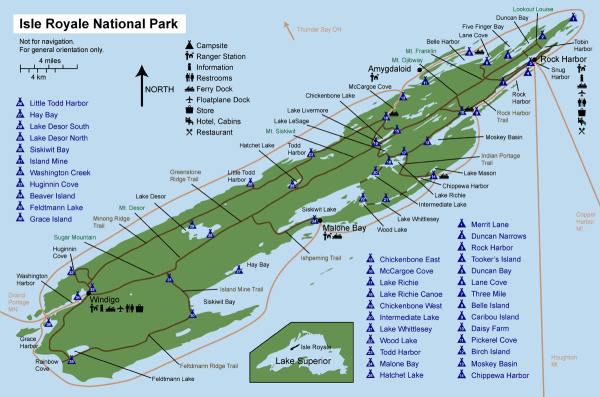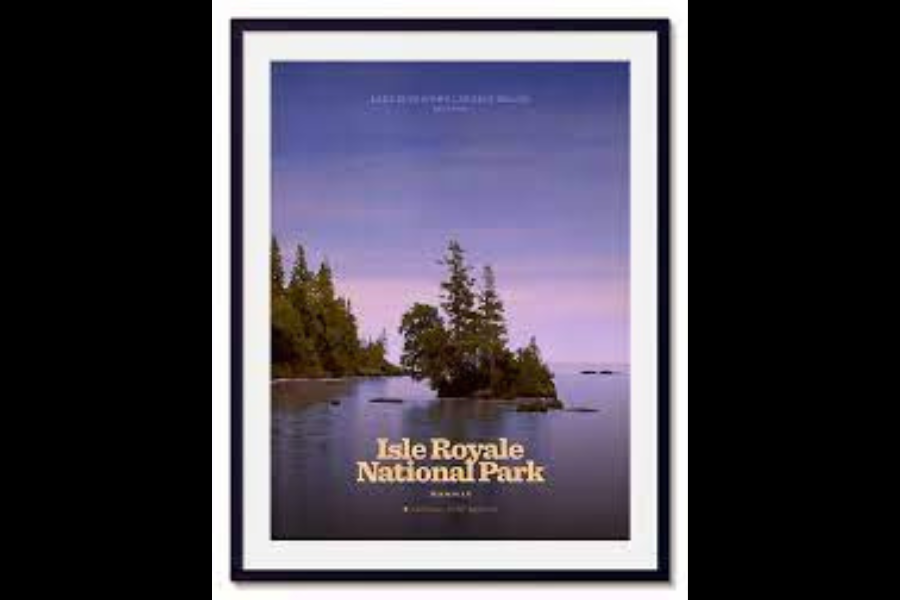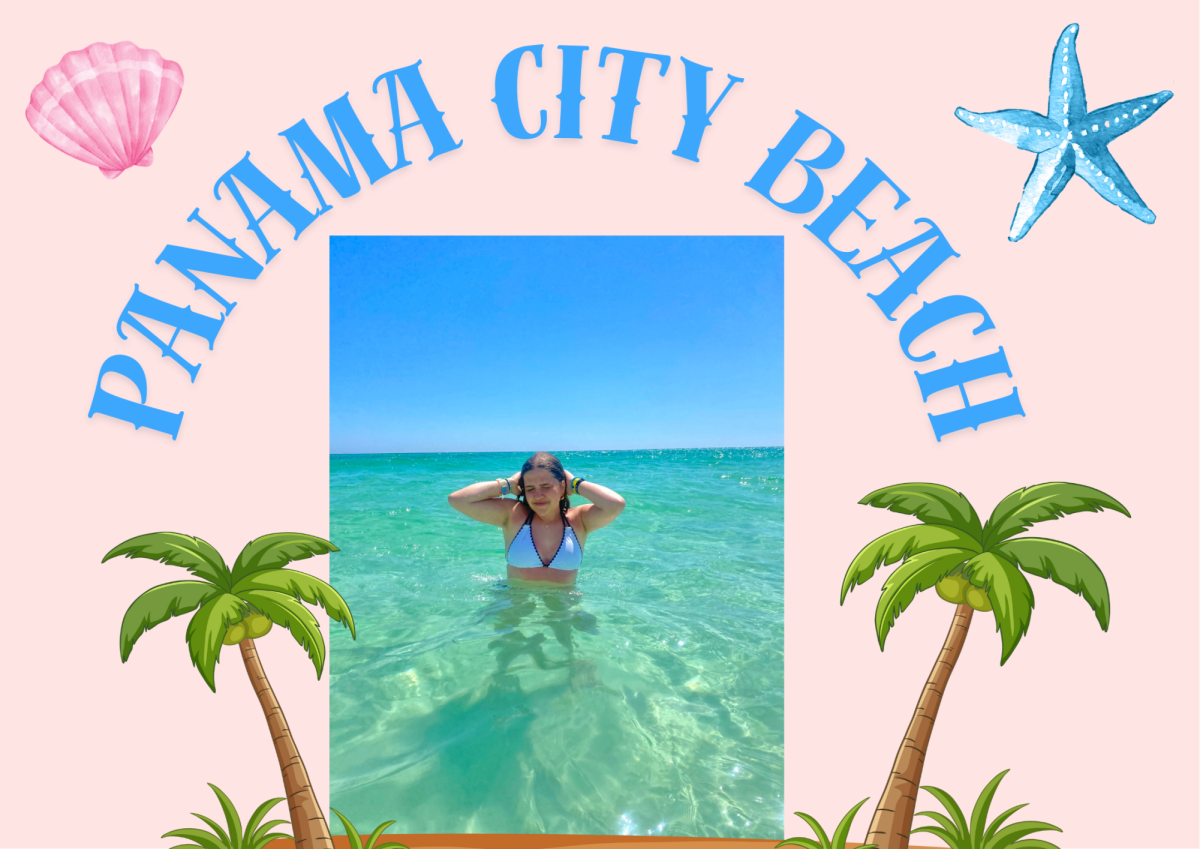Isle Royale is located on the North Coast of Lake Superior within the United States Borders. Although officially part of Michigan and its upper peninsula, the Isle’s are only 22 miles from Minnesota and over 50 miles from Michigan, for these reasons we will group it as a Minnesota Travel Destination.

This view of the main island’s shoreline with a few smaller islands to the left making up the over 450 islands of Isle Royale. Isle Royale National Park by Ray Dumas is licensed under Some Rights Reserved.
Isle Royale National Park is a grouping of small islands and underwater features along with the main island which is the largest island in Lake Superior. The island is only accessible through ferry, plane, or personal watercraft and is only open between April 16 and October 31. While the park is open the main attractions for visitors are backpacking and camping adventures as well as numerous day hiking options available. On the waters around the island, sport fishing is common with species being Lake and Brook Trout, along with other more common lake fish like Walleye and Perch. Isle Royale is well known for the wildlife that take refuge on the island. Predators like the grey wolf and bald eagle can be found roaming for prey. Other animals include a healthy moose population, beavers, otters, and many different fish species in the surrounding waters.
A short history of Isle Royale
Before European Settlement, Isle Royale was territory of the North Shore Ojibwe Tribe of Native Americans. Much of their land was used for hunting, trapping, and fishing. French explorers stumbled upon Isle Royale in 1622. Isle Royale’s vast forests and wilderness were used for small logging operations as well as multiple smaller mining operations around the island. The Isle was part of the Michigan Territory until 1837 when Michigan was officially accepted into statehood.

Isle Royale National Park is completely surrounded by the waters of Lake Superior meaning the only access to the park is through boat or plane. From Grand Portage, Minnesota, the VOYAGEUR II ferry boat crosses to Rock Harbor, Michigan on Isle Royale. People may also choose to fly via seaplane to the park from Grand Marais, MN.

Isle Royale is approximately 205 square miles in size, much of which is untouched wilderness. There are 165 miles of hiking trails on the island as well as 36 campgrounds providing numerous places to camp and explore the wilderness. There are many different options when it comes to choosing trails. Some cater to day hikers while other more grueling trails reserve themselves for well packed backpackers. Hikes that last longer than one day do require permits for the safety of the hiker as well as the island.
The island is also home to multiple historic sights such as the Rock of Ages Lighthouse, The Isle Royale Lighthouse, Passage Island Lighthouse, three different fire towers, and also a small development similar to many National Parks with a main office and other support buildings.
Off in the waters around Isle Royale there are 25 shipwrecks of which 10 are registered and open to recreational diving. The most famous of these shipwrecks is the SS America, a 31 ft steel freighter that sank in 1928. This wreck is located on the southwest end of the island and can be explored by recreational scuba diving.
















